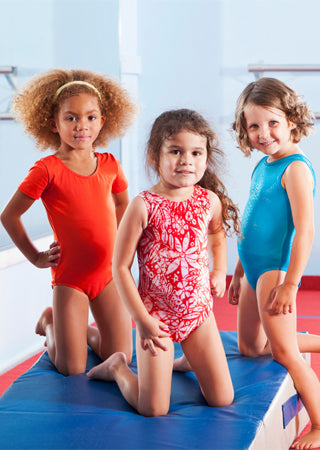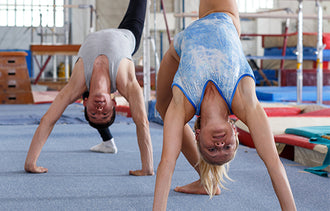Spatial awareness is not at all what it seems. Many think it's a mental faculty but it's actually created by the cause and effect relationships that affect the body itself in space and time, where different tendons pull on different bones of the body. Whenever a muscle is activated, a signal is sent to the brain telling the brain what pressure that bone and muscle felt in that moment, at that angle, at that intensity. The brain catalogs it and next time you are in a similar position, the brain will utilize that past data-point(s) to react faster in the future.
The Gym Spot talks to Greg Roe, International Trampoline Champion for Team Canada and CEO of Freestyle Trampolining Association about what Spatial Awareness means in terms of gymnastics and trampolining.
1. What is Spatial Awareness?
Spatial awareness is not actually a mental capability, it is the result of tendons pulling on all the different bones in the body over many years as you navigate the world. The more you move your body and pull the tendons in different ways, the more “Spatial Awareness” you will have.
2. What does this mean in terms of Gymnastics?
It means that gymnastics and trampoline coaches would benefit from exploring all kinds of axes and movements when developing young athletes. This gives them a larger base of ‘data-points’ to make better calculations in the future. Adding unique Freestyle skills into regular training will help athletes get better spatial awareness because their body is better at reacting to the push and pull forces that create the 3D Spatial Awareness ‘map’ in their brain.
3. What can trigger spatial awareness?
As mentioned, spatial awareness is not something you can trigger, like trauma or something that randomly comes in and out of consciousness. It is a build-up of stimuli in the brain that ultimately reflect how in control of your body you are. You can’t trigger obesity as it takes many months and years to build up enough bad habits to be “obese.” Spatial awareness is similar. Spatial Awareness and body control are really the same things at the neurological level.
4. How can spatial awareness impact one’s flow?
If athlete A has great spatial awareness and athlete B does not, athlete A will be more relaxed, confident and less nervous about NEW skills. Athlete B will be shy, have mental blocks and will not effectively get into a flow state as easily as a spatially-aware athlete. The athlete who can hold a conversation during flips vs. athlete B, who has to use every ounce of brainpower to stay on the trampoline, since they did not build up the cause and effect relationships throughout their body and will try to overcompensate with mental strategies that will burn out the neurons quicker, utilize more glucose faster and overall make athlete B mentally fatigued.
5. How can you train a gymnast to become spatially aware when it comes to training and competing?
You can help develop spatial awareness by simply allowing athletes to explore new movements in a step-by-step way that is NOT in the code of points. Invent new skills. Create new positions in the air. Any NEW movement will create a new data-point in the brain and give more information for that athlete at all points in the future. Start stockpiling unique biomechanical experiences!
6. What is something that gymnastics and trampoline coaches tend to overlook when it comes to the ideology of Spatial Awareness?
They seem to tend to think that it is built up in the brain and that if the athlete just follows the “correct” progressions, they will get “spatial awareness.” What they are doing is mixing up the robotic memorized responses from a “correct” progression, with the ability for the athlete to think for themselves and create split-moment decisions with the built-up data-points. When an athlete is doing a routine they have done for 4 years, they are NOT using spatial awareness to its real potential. Spatial awareness really starts playing a role when you are out of control, away from the routines you have biomechanically memorized and have to quickly react. Spatial awareness is more about the proper reaction to unknown stimuli, compared to repeated repetition to the same stimuli; such as a routine.
To see more of Greg, check out the interview he has with Gymnastics Victoria!














